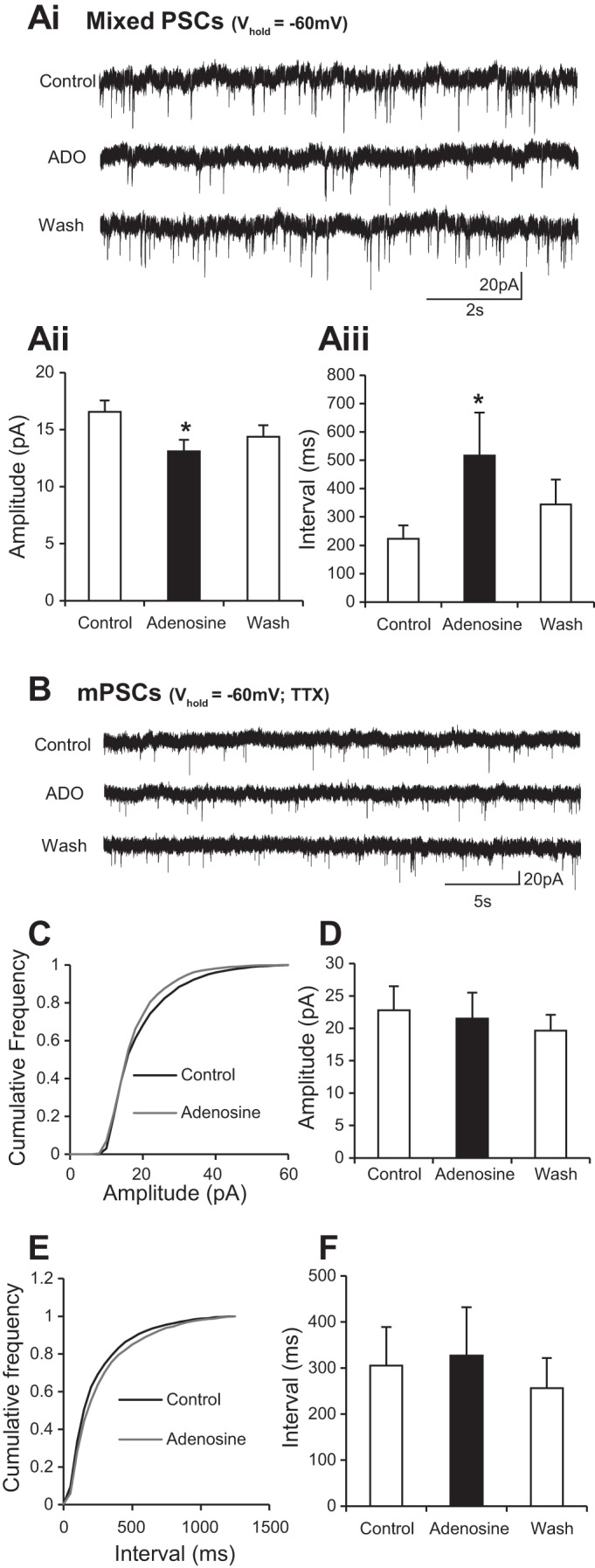Fig. 6.

Adenosine reduces the frequency and amplitude of synaptic inputs to motoneurons but does not affect mPSCs. Ai: voltage-clamp recordings from a motoneuron held at −60 mV revealing spontaneous synaptic inputs in control, adenosine, and wash conditions. Aii: averaged data showing that application of adenosine caused a reduction in the amplitude of synaptic events (n = 12 cells). Aiii: averaged data showing that application of adenosine caused an increase in the interval between events (n = 12). B: voltage-clamp recordings of mPSCs in a motoneuron held at −60 mV in the presence of TTX. C: averaged cumulative probability plot showing no change in amplitude of miniature postsynaptic potentials. D: averaged data showing that application of adenosine does not affect the amplitude of mPSCs. E: averaged cumulative probability plot showing no change in the interval between events. F: averaged data showing that application of adenosine does not affect the interval between mPSCs. These data suggest that adenosine does not directly affect synaptic transmission onto motoneurons. *Significantly different from control.
